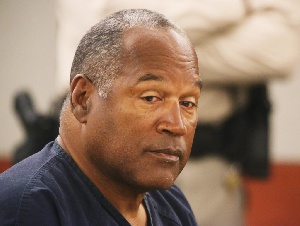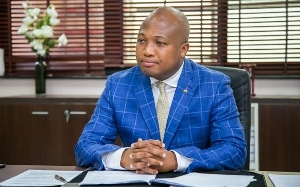It was reported on Wednesday, 10th April, 2024, of the demise of Orenthal James Simpson, better known as O. J. Simpson. O.J Simpson achieved status as one of the greatest running backs in the National Football League of the United States of America and, in the process, he was rewarded with enormous wealth and fame.
O.J’s trial and eventual acquittal for the murder of his former wife, Nicole Brown and her friend Ron Goldman in 1994, however, seem to have marred and distorted an otherwise heroic and historic career of an African-American athlete/sportsman.
Now, more than 28 years after the trial and acquittal and even upon his death some weeks ago, his trial and acquittal came up again for discussion with varied opinions over same.
The trial, labeled as “Trial of the Century” with its warts and all, offers the following lessons in criminal trials:
1. Economic factor: The economic factor is expressed in terms of how an accused person’s financial means facilitate an acquittal. Financial resources ensure that an accused person procures and engages a tier-one Defence Counsel. This clearly played out in the O. J. Simpson Trial where through the sheer force of money, astute legal minds such as Johnnie Cochran, Robert Shapiro, Robert Kardashian, F. Lee Bailey, and the inevitable Alan Dershowitz, lined the defense table. O. J. Simpson’s lofty background can be contrasted with the situation of the overwhelming majority of accused persons who struggle to afford the services of regular lawyers, thus denying them a prerequisite in criminal trial – effective representation by counsel. Suffice it to state that this trial demonstrates that with means comes best legal defence. The all-encompassing principle is that poverty is a curse and you can be shortchanged in life because of it.
2. Power of cross-examination: The O. J. Simpson trial demonstrates that effective and forceful cross-examination produces results. At the trial, F. Lee Bailey’s reputation soared for his masterful and compelling cross-examination skills, especially seen in his cross-examination of LAPD Detective Mark Furhman. Furhman, inter alia, testified about a bloody glove at the house of Simpson.
Mark Furhman practically crumbled and lost credibility as a witness during cross-examination. Note that a witness who mounts the box swears an oath to be truthful. Thus, in the course of his testimony if it is determined that his conduct/testimony runs counter to his solemn declarations and statutory expectations as detective Furman did, then the worth to be placed on the testimony, ditto, shrinks. That said, the O.J Simpson case spectacularly underlined the purposes of cross-examination in trials: to discredit witnesses make their testimony of zero-value and put one’s case across.
3. Collection and use of evidence at the trial: The settled legal consensus is that an accused person largely need not assume the burden of proving his innocence. At worst, he needs to raise a reasonable doubt as to his guilt. Reasonable doubt may come in the form of evidence adduced by the accused, especially when a prima facie case has been established, or from any of the pieces of evidence adduced by the prosecution.
Now the catch, if the O. J. Simpson case is noted for the skillful and effective cross-examination by F. Lee Bailey, then same is also a lesson in how shoddy collection and handling of evidence can catastrophically impact a case. For example, some of the evidence collected from the scene of the alleged crime, which is the house of O. J. Simpson, turned out to be contaminated, as a result of their handling and storage in custody.
It also happened that some blood sample taken from O. J. Simpson was missing and no reasonable explanation was proffered. Police officers and agents of the State that collect, handle and store evidence for trial must handle exhibits with utmost care and professionalism and not leave anything to chance because a heavily compromised exhibit will shatter into crumbs during cross-examination.
4. Quality of evidence and not volume or quantity of evidence: The prosecution was certain they have all the evidence to nail O. J. Simpson: a bloody cap, one bloody glove, a size 12 bloody footprint and many blood drops they believed were from the O. J’s left hand. However, in the final reckoning, there was not enough quality in them to obtain a conviction, especially when in open court it turned out that the so-called gloves used in the murder did not fit the accused. Overall, it emphasized the long-held notion that evidence is the name of the game and evidence is what can be proved in court.
5. Biases is real in criminal trials: Biases and prejudices are everywhere. Biases are about deep-seated beliefs and views about others, groups or situations. It determines how naturally we positively or negatively react to them. Biases are also in the courtroom and can be found in jurors in a jury trial for example. Prejudice plays out this way: We have made up our minds and do not despise us with the facts. In this trial, while White Americans believed O. J was guilty and did it, African Americans saw him as innocent.
While a lot has been said and written about the luxury of excellent and high-end lawyers assembled by O. J. Simpson that significantly ensured he would walk free, it cannot be disputed the role that biases and prejudices played in the verdict. With a 12 man jury out of which nine (9) were black or African American as O. J. and with a history of tension between the LAPD and African Americans, and what they perceived as a racist justice system, that made O. J. appear a victim who was being persecuted by the system because he was black, diverting attention from the main task at hand: For a man to answer for possible criminal conducts!
Opinions of Tuesday, 21 May 2024
Columnist: Emmanuel K. Owusu-Asare



















